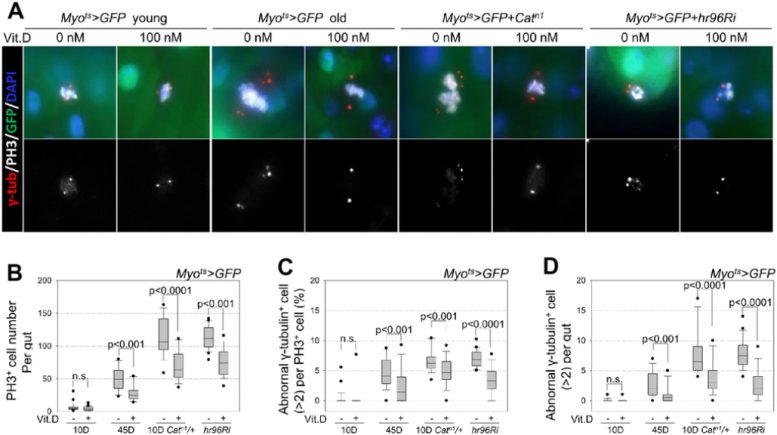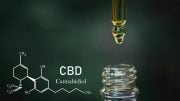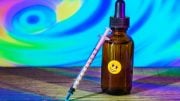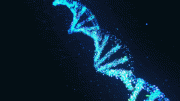
New research highlights the anti-aging benefits of vitamin D and its receptor in Drosophila, revealing their significant role in stem cell health and longevity, and providing insights into aging mechanisms.
Adult stem cells play a crucial role in keeping tissue balance, with their diminished functionality tied to aging and related illnesses, affected by the surrounding cells’ environment. Clinical studies in humans have consistently shown a decrease in vitamin D and its receptor levels due to aging and cancer. Despite this, the ways in which the vitamin D/vitamin D receptor (VitD/VDR) pathway aids in anti-aging and life span extension remain unclear.
In a new study, researchers Joung-Sun Park, Hyun-Jin Na, and Yung-Jin Kim from Pusan National University and Korea Food Research Institute aimed to determine the protective role of the vitamin D/vitamin D receptor pathway in differentiated enterocytes (ECs) during intestinal stem cell (ISC) aging.

Inhibitory effect of VitD on age- and oxidative stress-related accumulation of supernumerary centrosomes in midgut ISCs. Credit: 2024 Park et al.
Study Objective and Methodology
The researchers stated, “This study aimed to determine the protective role of VitD/VDR in differentiated ECs during ISC aging using the adult Drosophila intestine model.”
By utilizing a well-established Drosophila midgut model for stem cell aging biology, the researchers revealed that vitamin D receptor knockdown in ECs induced ISC proliferation, EC death, ISC aging, and enteroendocrine cell differentiation. Additionally, age- and oxidative stress-induced increases in ISC proliferation and centrosome amplification were reduced by vitamin D treatment. In conclusion, this study provides direct evidence of the anti-aging role of the VitD/VDR pathway, involving protecting ECs during aging, and provides valuable insights for exploring the molecular mechanisms underlying enhanced healthy aging in Drosophila.
“Our findings suggest a direct evidence of the anti-aging role of the vitamin D/vitamin D receptor pathway and provide insights into the molecular mechanisms underlying healthy aging in Drosophila.”
Reference: “The anti-aging effect of vitamin D and vitamin D receptor in Drosophila midgut” by Joung-Sun Park, Hyun-Jin Na and Yung-Jin Kim, 7 February 2024, Aging.
DOI: 10.18632/aging.205518









So Vit D3 may be why I look 20 years younger than I am!
I started taking D3 during the Covid19 epidemic. When I finally did get actual Covid19, it lasted only about 4 days, and wasn’t that bad for me. However I found when I take too much D3, I start to get tingling in my hands. Since than I have dialed back to 1-2 D3 4000IU pills a week. The tingling has gone away. However when I read stories like this. I think I’ll keep taking it, but at a moderate level.
Vitamin D is fat-soluble, meaning it gets stored in your body fat and can, therefore, build up if you get too much. So, it is important to moderate how much you take in every day. I’m getting 3000 – 4000 IU daily on doctor’s orders as I have endocrine issues, and we measure the Vitamin D in my blood twice yearly to make sure I have enough.
Fruit flies are not humans, and I doubt the validity of insect models for human intestines. In addition, the natural source of Vit. D is the sun, which has more positive impacts on the body than just making Vit. D. So this study uses artificially-supplied Vit. D and tested it on fruit fly intestines. The real question is why research like this gets funding and attention.